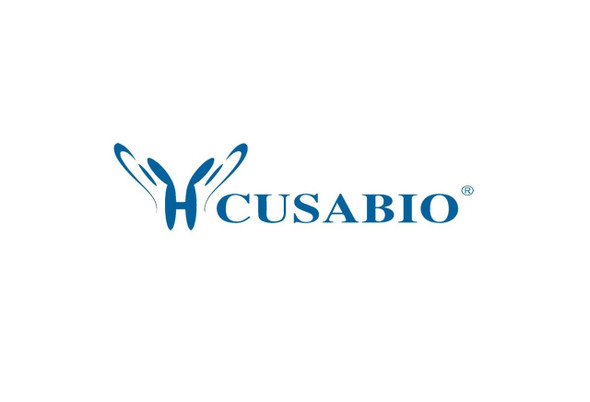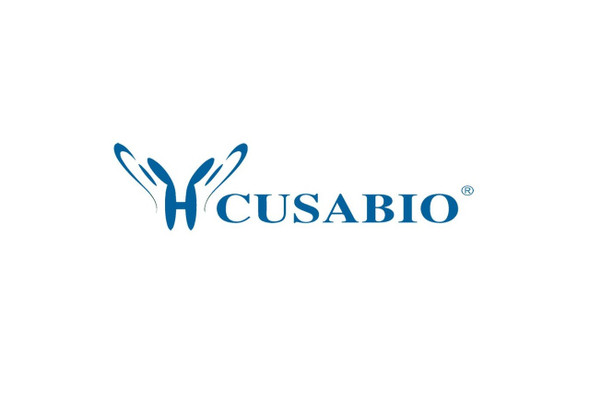Cusabio Virus & Bacteria Recombinants
Recombinant Human metapneumovirus Matrix protein (M) | CSB-EP761526HDAM
- SKU:
- CSB-EP761526HDAM
- Availability:
- 3 - 7 Working Days
Description
Recombinant Human metapneumovirus Matrix protein (M) | CSB-EP761526HDAM | Cusabio
Alternative Name(s): M; Matrix protein
Gene Names: M
Research Areas: Signal Transduction
Organism: Human metapneumovirus (strain CAN97-83) (HMPV)
AA Sequence: MESYLVDTYQGIPYTAAVQVDLVEKDLLPASLTIWFPLFQANTPPAVLLDQLKTLTITTLYAASQSGPILKVNASAQGAAMSVLPKKFEVNATVALDEYSKLEFDKLTVCEVKTVYLTTMKPYGMVSKFVSSAKPVGKKTHDLIALCDFMDLEKNTPVTIPAFIKSVSIKESESATVEAAISSEADQALTQAKIAPYAGLIMIMTMNNPKGIFKKLGAGTQVIVELGAYVQAESISKICKTWSHQGTRYVLKSR
Source: E.coli
Tag Info: N-terminal 10xHis-tagged and C-terminal Myc-tagged
Expression Region: 1-254aa
Sequence Info: Full Length
MW: 35.1 kDa
Purity: Greater than 85% as determined by SDS-PAGE.
Relevance: Has a crucial role in virus assembly and budding. The matrix interacts with the RNP complex and this association serves two functions: facilitate virion assembly and inhibit the viral transcriptase activity. Early in infection, M is localized to the nucleus and may inhibit host cell transcription. Later on, M can associate with lipid rafts supposely by interacting with the cytoskeleton and with the cytoplasmic tail of glycoprotein G. The binding of M to host membrane is stabilized by the surface expression of the viral glycoproteins. These interactions may allow virus formation by mediating association of the nucleocapsid with the nascent envelope.
Reference: "Chimeric recombinant human metapneumoviruses with the nucleoprotein or phosphoprotein open reading frame replaced by that of avian metapneumovirus exhibit improved growth in vitro and attenuation in vivo." Pham Q.N., Biacchesi S., Skiadopoulos M.H., Murphy B.R., Collins P.L., Buchholz U.J. J. Virol. 79:15114-15122(2005)
Storage: The shelf life is related to many factors, storage state, buffer ingredients, storage temperature and the stability of the protein itself. Generally, the shelf life of liquid form is 6 months at -20?/-80?. The shelf life of lyophilized form is 12 months at -20?/-80?.
Notes: Repeated freezing and thawing is not recommended. Store working aliquots at 4? for up to one week.
Function: Has a crucial role in virus assembly and budding. The matrix interacts with the RNP complex and this association serves two functions
Involvement in disease:
Subcellular Location: Virion, Host cytoplasm, Host nucleus, Host cell membrane, Peripheral membrane protein, Cytoplasmic side
Protein Families: Paramyxoviruses M protein family
Tissue Specificity:
Paythway:
Form: Liquid or Lyophilized powder
Buffer: If the delivery form is liquid, the default storage buffer is Tris/PBS-based buffer, 5%-50% glycerol. If the delivery form is lyophilized powder, the buffer before lyophilization is Tris/PBS-based buffer, 6% Trehalose, pH 8.0.
Reconstitution: We recommend that this vial be briefly centrifuged prior to opening to bring the contents to the bottom. Please reconstitute protein in deionized sterile water to a concentration of 0.1-1.0 mg/mL.We recommend to add 5-50% of glycerol (final concentration) and aliquot for long-term storage at -20?/-80?. Our default final concentration of glycerol is 50%. Customers could use it as reference.
Uniprot ID: Q6WB99
HGNC Database Link: N/A
UniGene Database Link: N/A
KEGG Database Link: KEGG
STRING Database Link: N/A
OMIM Database Link: N/A









